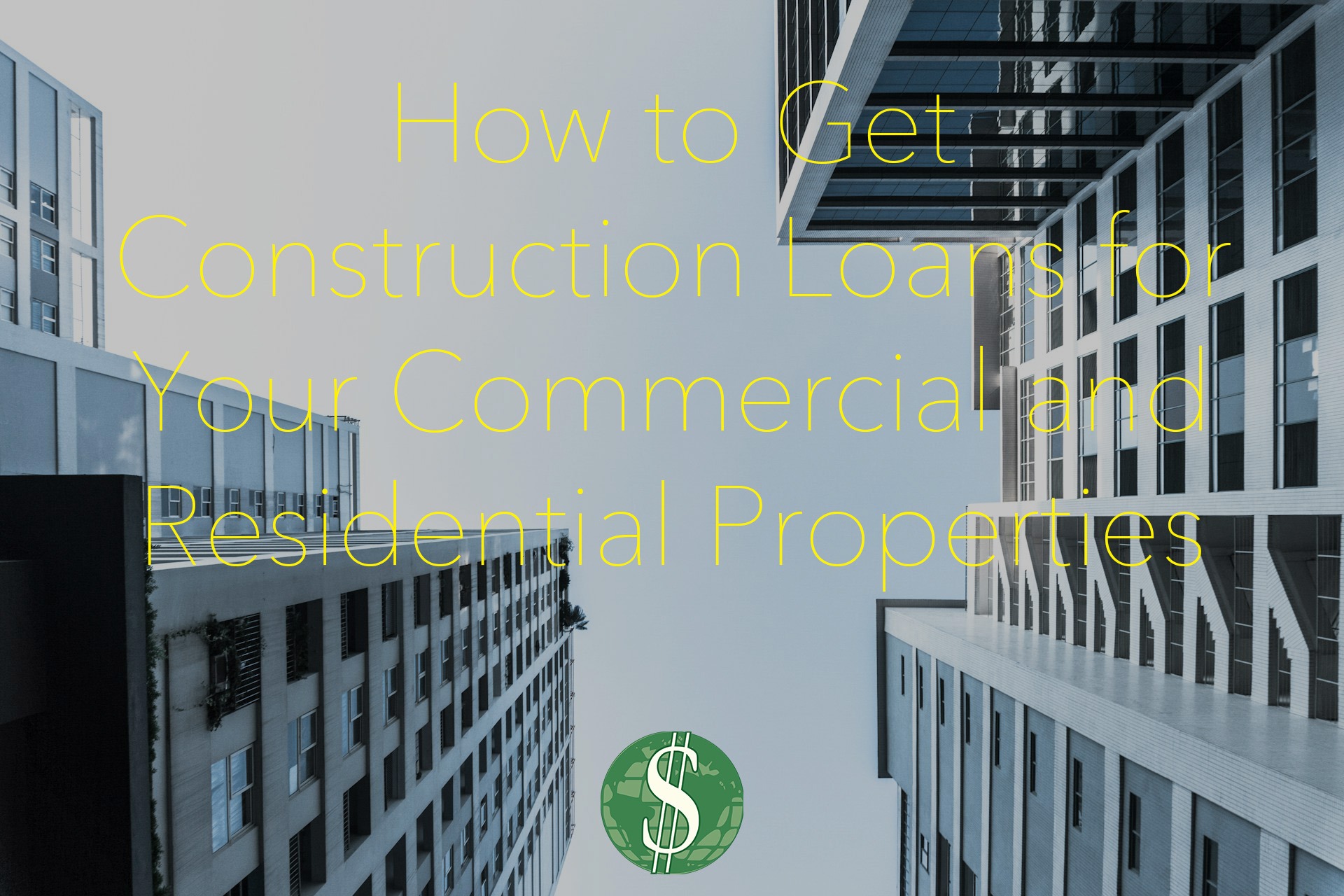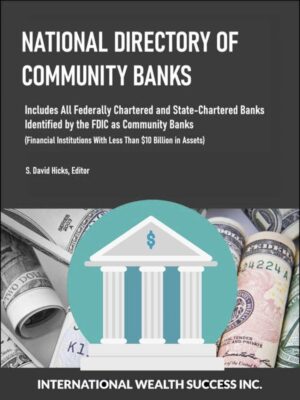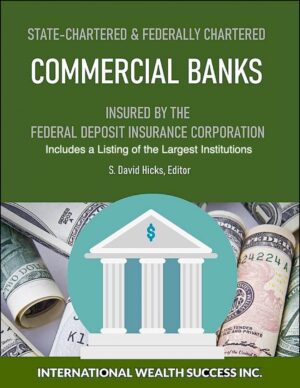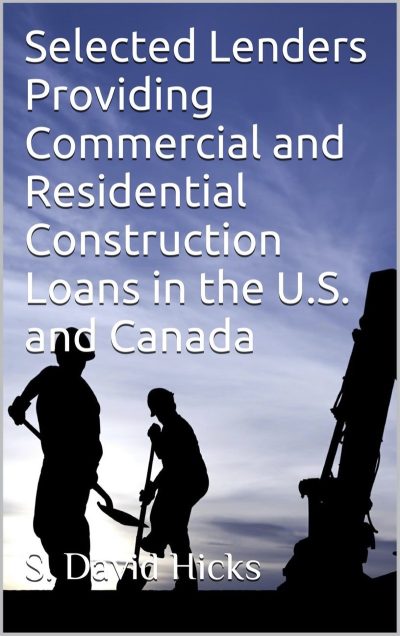CONSTRUCTION LOANS ARE AVAILABLE in the United States, Canada, and worldwide for all types of real estate, including:
- Single-family residential properties
- Multifamily residential properties
- Businesses and commercial properties
- Land, raw and developed
CONSTRUCTION LOANS GENERALLY DON’T COME IN NEAT, standardized packages like conventional mortgage loans which are structured according to strict government regulations.
FOR RESIDENTIAL PROPERTIES IN THE U.S., certain parameters relating to construction or renovation of a property being acquired may be specified in the standard Uniform Residential Loan Application (Form 1003) required for government-backed mortgages.
FINANCING FOR MULTIFAMILY AND COMMERCIAL PROPERTIES is more complex and harder to obtain than residential home loans. Commercial properties include
- office buildings,
- shopping centers,
- retail outlets,
- healthcare facilities,
- educational buildings,
- storage structures,
- apartment complexes,
- manufacturing facilities
- or other properties that will be sold or rented.
These properties may cost hundreds of millions of dollars to build, renovate or retrofit.
In addition, commercial construction may involve multiple investors, joint ventures, bond financing and complicated tax structures.
Either way, all construction loans have certain basic features in common.
Here’s a brief overview of key points about construction loans.
THERE ARE TWO COMMON FORMS OF CONSTRUCTION LOANS:
- Construction loans obtained by the builder
- Construction loans obtained by the property owner
A CONSTRUCTION LOAN MAY FURNISH:
- Construction-only financing
- Construction-to-permanent financing, where the construction loan is converted to a longer-term traditional mortgage after construction is complete
CONSTRUCTION LOANS TYPICALLY REQUIRE interest-only payments during construction. The principal then becomes due after construction is completed or a certificate of occupancy has been issued. On a construction-to-permanent loan, the lender may schedule mortgage payments to begin when construction is finished and the builders have been paid.
CONSTRUCTION LOANS ARE USUALLY, BUT NOT ALWAYS, set at a variable rate and priced according to a short-term interest rate, such as the prime rate. As a result, interest rates on construction loans can change frequently.
KEY PARAMETERS to consider in any construction loan include:
- type of loan (construction-only, bridge, construction-to-permanent, permanent, forward commitment; new construction, rehabilitation; debt, equity, convertible, commercial mortgage-backed securities, bond)
- interest rates and type of interest (fixed, variable, Treasury-based)
- term (short- or long-term, number of years)
- loan-to-value ratio
- availability of tax credits (First-Time Homebuyer Credit, Energy Efficient Tax Credit, Renewable Energy Investment Tax Credit, Low-Income Housing Tax Credit, Rehabilitation Credit, Research and Development Credit and others)
- additional assistance available from state, federal or local government programs or loan guarantees (Department of Housing and Urban Development, Federal Housing Administration, FannieMae, FreddieMac, Veteran’s Administration, Canadian Mortgage Housing Corporation)
-
 IWS-64 : The IW$ Guide to Ultimate Credit
IWS-64 : The IW$ Guide to Ultimate Credit -
 IWS-54 : The Leverage Code
IWS-54 : The Leverage Code -
 BB-1 : The Ultimate Tyler G. Hicks Wealth-Building Library (An IW$ Big Bundle)
BB-1 : The Ultimate Tyler G. Hicks Wealth-Building Library (An IW$ Big Bundle) -
 IWS-205 : Tyler G. Hicks’ Wealth Creation Vault
IWS-205 : Tyler G. Hicks’ Wealth Creation Vault -
 ATTAIN : Access for Wealth-Builders Worldwide Since 1966
ATTAIN : Access for Wealth-Builders Worldwide Since 1966 -
 IWS-211 : The IWS National Directory of Community Banks
IWS-211 : The IWS National Directory of Community Banks -
 IWS-210 : The IWS Directory of Commercial Banks In the United States
IWS-210 : The IWS Directory of Commercial Banks In the United States -
 IWS-75 : The IWS Directory of U.S. Embassies, Consulates, and Diplomatic Missions Worldwide
IWS-75 : The IWS Directory of U.S. Embassies, Consulates, and Diplomatic Missions Worldwide
DURING CONSTRUCTION, FUNDS ARE TAKEN FROM THE LOAN through a process known as a “draw.” The draw is the method by which money from the construction budget is paid out to material suppliers and contractors.
THE BORROWER, CONTRACTOR AND LENDER establish a draw schedule based on stages of construction, and interest is charged on the amount of money disbursed up to a particular date. Different lenders have different requirements for processing a draw.
MANY BORROWERS USE CONSTRUCTION-TO-PERMANENT FINANCING programs where the construction loan is converted to a mortgage loan after the certificate of occupancy is issued. The main advantage here is that the loan requires one loan application and one closing. These construction loans are sometimes called “all-in-one” or “one-time close” loans.
ANOTHER OPTION IS TO SECURE A SHORT-TERM construction loan, then refinance it into a conventional mortgage when construction is finished. This requires two applications and two closings.
OTHER COMMON CONSTRUCTION LOANS include fixed 15-year, 30-year, interest-only and variable-rate loans.
BEFORE PRESENTING THE LOAN APPLICATION TO THE LENDER
The borrower and the builder must prepare a strict budget which covers two general categories of costs:
- Soft costs for expenses like architectural, engineering, legal and administrative fees, blueprints, permits, etc.
- Hard costs for the “bricks-and-mortar” items like building materials and payments to contractors to build the structure.
NEARLY ALL BUILDING PROJECTS EXPERIENCE CONSTRUCTION DELAYS, so everyone involved must allow for delays and accommodate the changes in costs they inevitably bring. For this reason, the lender usually sets a schedule of regular inspections. A loan officer may visit the property monthly to monitor progress. If changes are needed, a change order is issued to document them.
ADDITIONAL DOCUMENTS TYPICALLY USED in construction financing include
- a Construction Loan Summary and Budget,
- Borrower/Builder Agreement,
- Construction Cost Breakdown,
- Draw Instructions,
- Contractor/Supervisor Information Form,
- Land Plat of Survey,
- Floor Plans and Builder Specifications,
- and Description of Building Materials.
Many lenders will furnish a Construction Loan Document Checklist to assist in organizing the necessary documentation.
AS WITH ALL REAL ESTATE LOANS, the borrower must complete a loan application and document his or her income, bank account details, assets, credit history and other relevant information.
For safety, some real estate experts recommend that borrowers go through a pre-qualification process before applying for a construction loan and embarking on any building or rehab project.
IF THE BORROWER ALREADY OWNS THE LAND, the land may be considered as equity on the construction loan. Private lenders and investors sometimes provide hard money loans which are secured by the value of the land and/or building.
Location
LOCATION CAN MAKE A BIG DIFFERENCE IN HOW EASY IT IS to get a construction loan. In areas where the economy is booming, banks are more eager to make new loans because their risk is much less than in areas where the economy is weak and property values are stagnant or falling.
WHEN SEEKING A CONSTRUCTION LOAN, shop around for experienced lenders with a good track record in construction finance.
Construction loans can be quite complex, so make sure you understand all the variables and requirements before accepting an offer.
Get all quotes in writing. If possible, consider locking in your interest rate upfront.
SELECTED LENDERS FOR COMMERCIAL AND RESIDENTIAL CONSTRUCTION LOANS IN THE U.S. AND CANADA
IWS-91 : The IWS Directory of Selected Lenders for Commercial and Residential Construction Loans in U.S. and Canada
International Wealth Success is proud to introduce one of the first convenient resources on construction lenders and construction loan programs in North America.


















